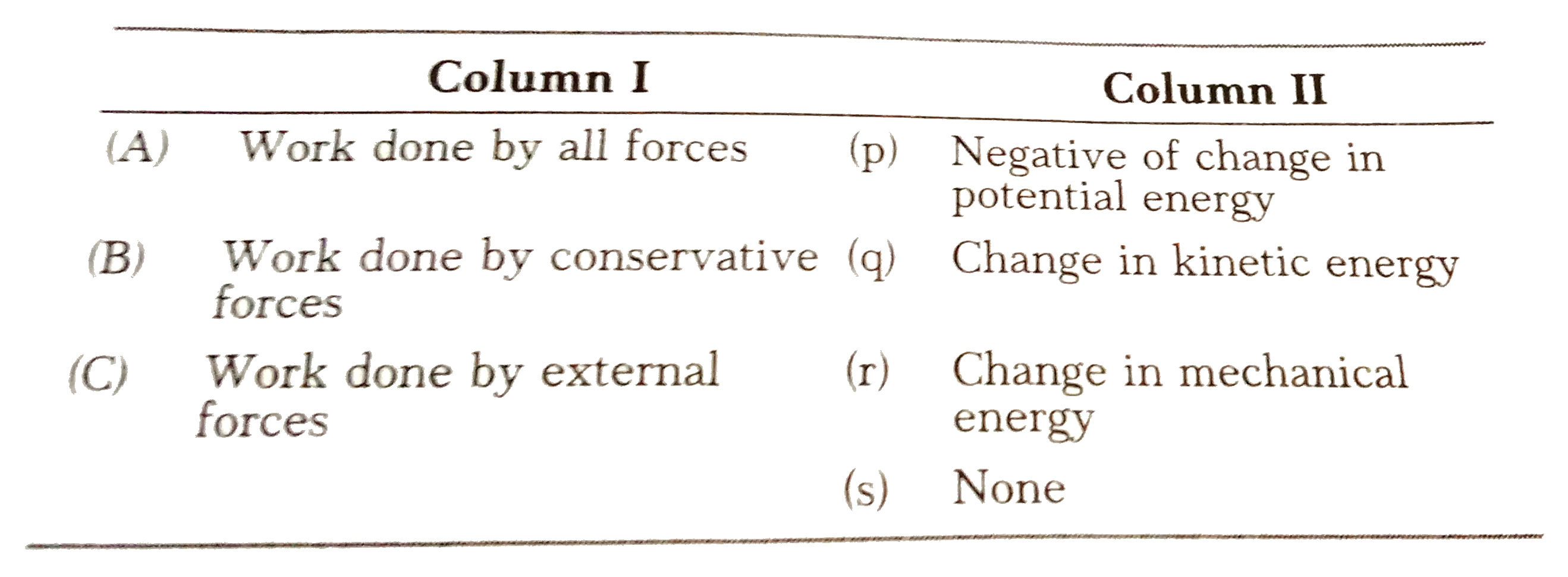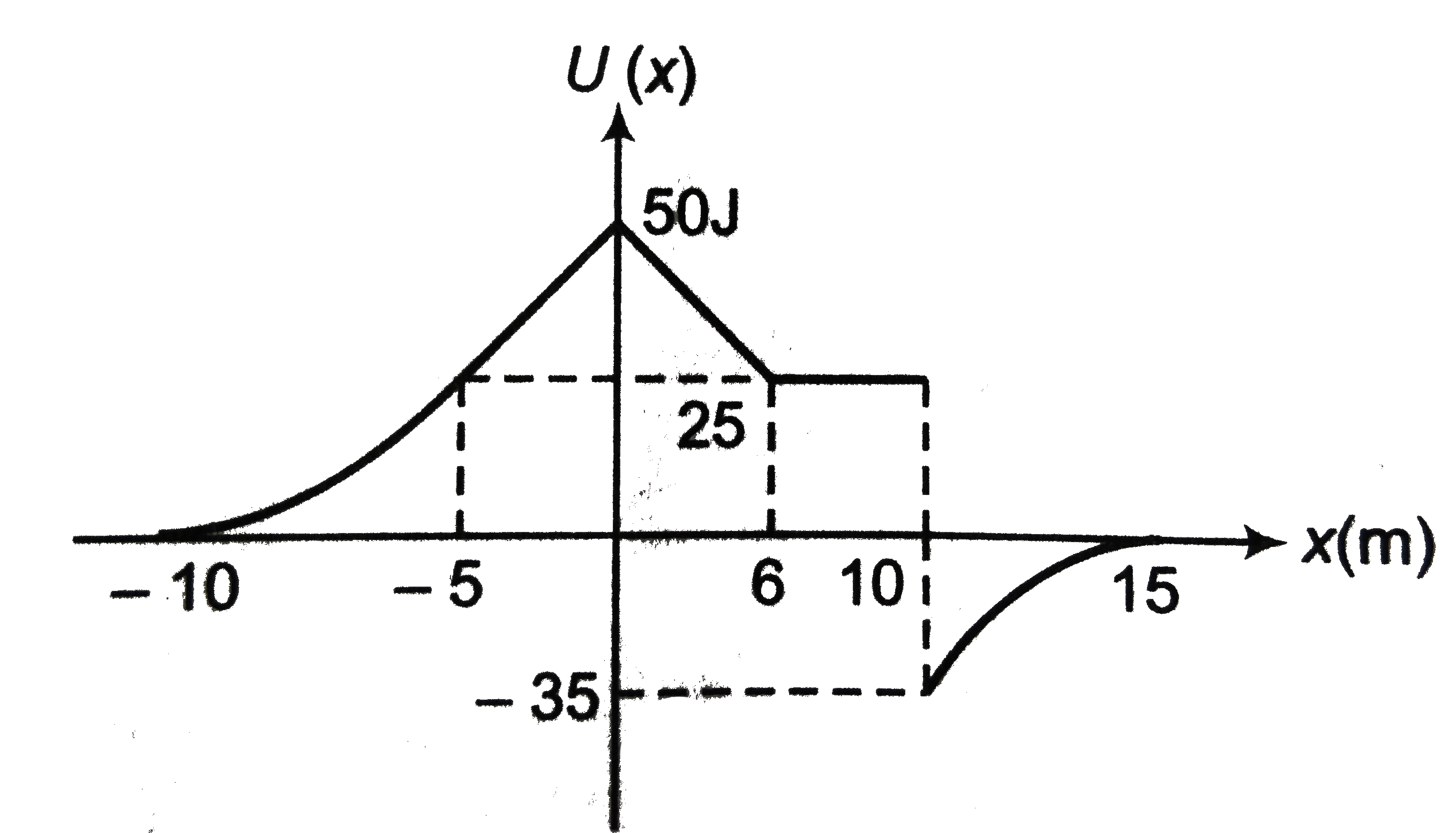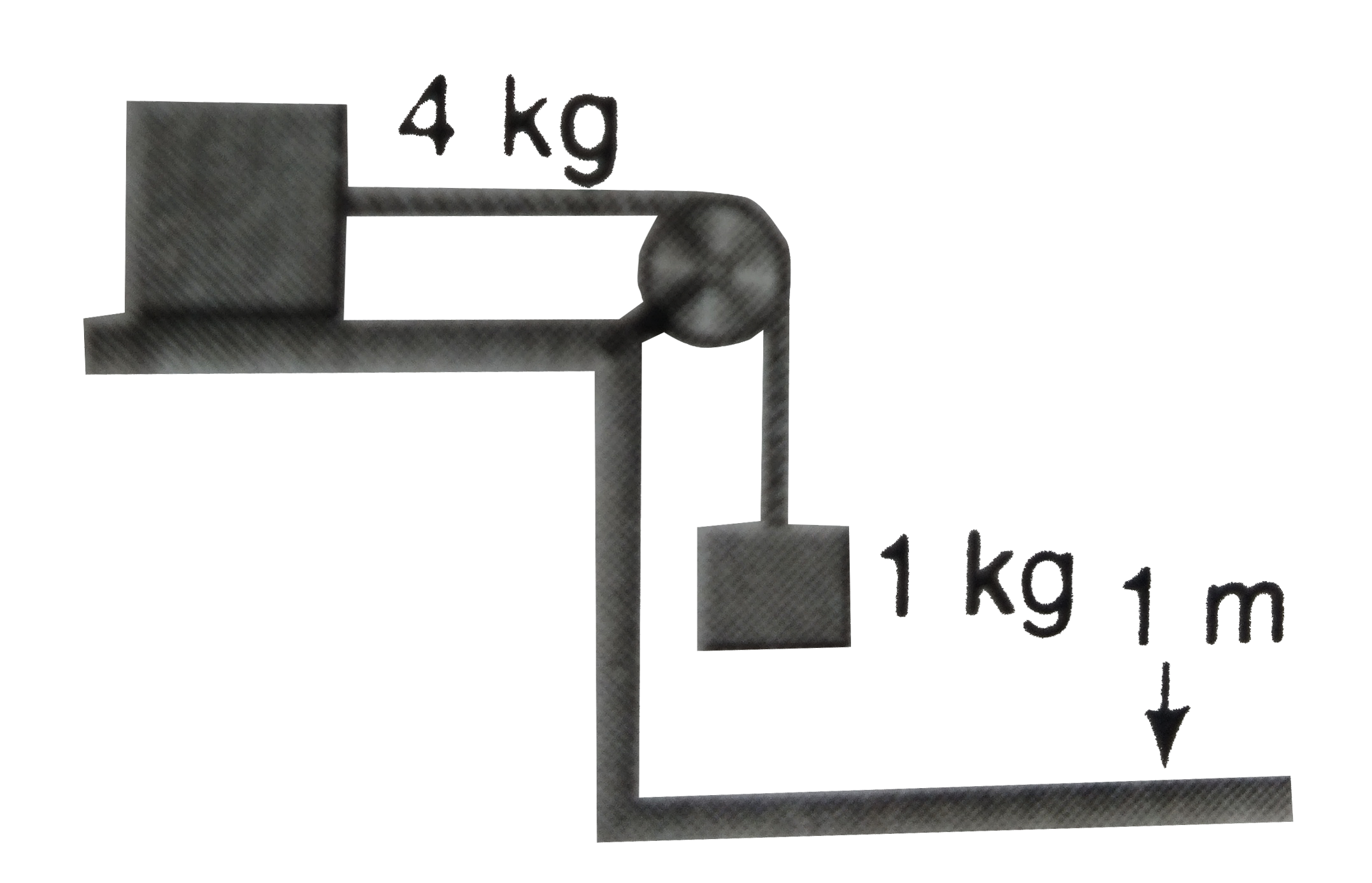If a body of mass 200 g falls a height 200 m and its total P.E. is converted into K.E. at the point of contact of the body with earth surface. Then what is the decrease in P.E. of the body at the contact.
(g=10m/s2)
900 J
600 J
400 J
200 J
The correct Answer is:C
To solve the problem, we need to calculate the decrease in potential energy (P.E.) of a body when it falls from a height. The potential energy at a height is given by the formula:
P.E.=mgh
where:
- m is the mass of the body,
- g is the acceleration due to gravity,
- h is the height from which the body falls.
1. Convert Mass from grams to kilograms:
The mass of the body is given as 200 g. We need to convert this to kilograms since the SI unit of mass is kg.
m=200 g1000=0.2 kg
2. Identify the values:
We have:
- m=0.2 kg
- g=10 m/s2
- h=200 m
3. Calculate Potential Energy (P.E.):
Now we can substitute the values into the potential energy formula:
P.E.=mgh=0.2 kg×10 m/s2×200 m
4. Perform the multiplication:
P.E.=0.2×10×200=0.2×2000=400 Joules
5. Conclusion:
The decrease in potential energy of the body at the point of contact with the earth's surface is:
Decrease in P.E.=400 Joules
Final Answer:
The decrease in potential energy of the body at the contact is 400 Joules.
---
- m is the mass of the body,
- g is the acceleration due to gravity,
- h is the height from which the body falls.
The mass of the body is given as 200 g. We need to convert this to kilograms since the SI unit of mass is kg.
m=200 g1000=0.2 kg
We have:
- m=0.2 kg
- g=10 m/s2
- h=200 m
Now we can substitute the values into the potential energy formula:
P.E.=mgh=0.2 kg×10 m/s2×200 m
P.E.=0.2×10×200=0.2×2000=400 Joules
The decrease in potential energy of the body at the point of contact with the earth's surface is:
Decrease in P.E.=400 Joules
The decrease in potential energy of the body at the contact is 400 Joules.
Topper's Solved these Questions
- WORK, ENERGY AND POWERBOOK - DC PANDEY ENGLISHCHAPTER - WORK, ENERGY AND POWEREXERCISE - MEDICAL ENTRANCE SPECIAL QUESTIONS
16 Videos
- WORK, ENERGY AND POWERBOOK - DC PANDEY ENGLISHCHAPTER - WORK, ENERGY AND POWEREXERCISE - MATCH THE COLUMNS
7 Videos
- WORK, ENERGY AND POWERBOOK - DC PANDEY ENGLISHCHAPTER - WORK, ENERGY AND POWEREXERCISE - CHECK POINT 6.3
10 Videos
- WORK, ENERGY & POWERBOOK - DC PANDEY ENGLISHCHAPTER - WORK, ENERGY & POWEREXERCISE - Level 2 Comprehension Based
2 Videos
- WORK, POWER AND ENERGYBOOK - DC PANDEY ENGLISHCHAPTER - WORK, POWER AND ENERGYEXERCISE - E Integer Type Questions
11 Videos
Similar Questions
These questions consists of two statements each printed as Assertion and Reason. While answering these question you are required to choose any one of the following five reponses
(a) If both Assertion and Reason arecorrect and Reason is the correct explanation of Asserrtion.
(b) If both Assertion and Reason are correct but Reason is not the correct explanation of Assertion.
(c ) If Assertion is true but Reason is false.
(d) If Assertion is false but Reason is true.
Assertion . Work done by constant force is equal to magnitude of force multiplied by displacement.
Reason. Work done is scalar quantity. If may be positive, negative or zero.
View SolutionMatch the following columns.

View SolutionA body of mass m is acceleratad uniformaly from rest to a speed v in a time T . The instanseous power delivered to the body as a function of time is given by
View SolutionThe figure shows the variation of potential energy of a particle as a function pf x, the x-coordination of the region. It has been assumed that potential energy depends only on x. For all other values x,U is zero. i.e. forx<−10 and x>15,U=0.

If total mechanical energy of the particle is 25J, then it can found in the region
View SolutionA 4kg block is on a smooth horizontal table. The block is connected to a second block of mass 1kg by a massless flexible taut cord that passes over a frictionless pulley. The 1kg block is 1m above the floor. The two block are released from rest. With what speed does the 1kg block hit the ground?
 .
.
View SolutionIf a body of mass 200 g falls a height 200 m and its total P.E. is converted into K.E. at the point of contact of the body with earth surface. Then what is the decrease in P.E. of the body at the contact.
(g=10m/s2)
View SolutionA body of mass 2 kg is dropped from rest from a height 20 m from the surface of Earth. The body hiys the ground with velocity 10 m/s, then work done (g=10m/s2)
View Solutionएक 100 ग्राम द्रव्यमान का पिण्ड 20 मीटर/सेकण्ड के वेग से ऊर्ध्वाधर ऊपर की और फेंका जाता है। पिण्ड कितनी ऊँचाई तक ऊपर जाएगी? उस ऊँचाई पर पिण्ड की कुल ऊर्जा कितनी होगी? (g=10 मीटर/सेकण्ड2)
View SolutionA body is projected vertically upwards with velocity of 10m/s. At a point P in its path, its P.E. and K.E. are equal. What is the height of the point?
View SolutionA body of mass m falls from earth's surface at a height equal to twice the radius (R) each. Then the change in P.E. of body will be
View SolutionA body of mass m is raised through a distance equal to the radius of the earth from earth's surface. The change in P.E. will be:
View SolutionA body of mass m is raised through a distance equal to the radius of the earth from earth's surface. The change in P.E. will be:
View Solution200 ग्राम द्रव्यमान की एक वस्तु पृथ्वी से 200 मीटर की ऊँचाई से छोड़ी जाती है , पृथ्वी की सतह के संपर्क में आने के क्षण इसकी सम्पूर्ण स्थितिज ऊर्जा गतिज ऊर्जा में रूपांतरित हो जाती है इसकी स्थितिज ऊर्जा में होने वाली कमी होगी (g=10m/s2)
View SolutionIf a body of mass 200 g falls a height 200 m and its total P.E. is converted into K.E. at the point of contact of the body with earth surface. Then what is the decrease in P.E. of the body at the contact.
(g=10m/s2)
View Solution40kg द्रव्यमान का एक पिंड धरती से 5m की ऊँचाई तक उठाया जाता है। इसकी स्थितिज ऊर्जा कितनी है ? (g=10m/s2)
View Solution
